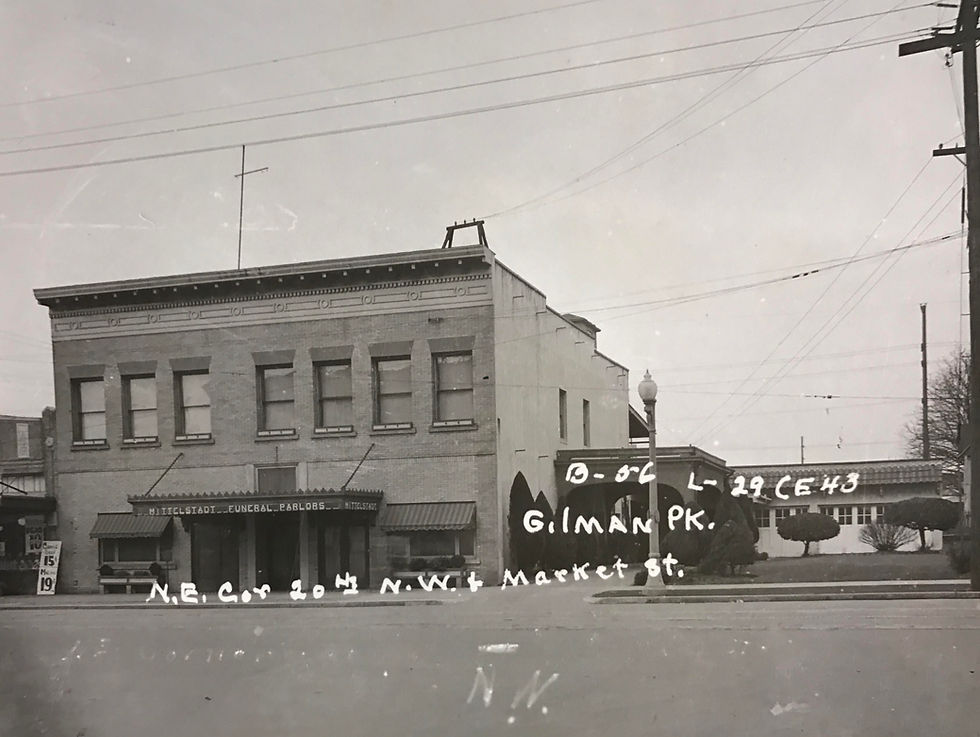Bricks, Brackets & Lifts: Revitalizing a 1925 Bungalow
- Ellen Mirro

- Nov 18, 2022
- 2 min read
Our newest portfolio is live: a recently-completed remodel to a two-bedroom home in the northeastern corner of Capitol Hill. Our clients were an older couple who were downsizing from a much larger house, so two of our priorities for the project were to maximize storage and to implement aging-in-place strategies so the owners can remain in the house for years to come. They also wanted to retain the home’s Craftsman charm, while upgrading for energy efficiency and universal accessibility.

The house (pictured above right in 1937) retained much of its 1925 design, but subsequent front- and back-porch additions replacing. The new front porch matches the overall design of the house, and oversized pots on the porch posts give a pop of drama. We replaced the brackets supporting the porch roof, matching them to the original.

The house was already outfitted with railings and ample grab bars, but we wanted to integrate the accessibility features, which included ramps and lifts in both front and back.

The clients wanted a leafy and beautifully landscaped backyard, and ample windows to retain a connection to the outdoors. We opened up an enclosed porch, replaced the existing back stairs, and removed the backyard pergola. We also created a cantilevered addition at the left side of this rear facade, converting a bedroom to a west-facing sunroom.

Image by Jim Houston
A new two-car garage on the site of the concrete carport provided plenty of additional storage. A fence with natural wood arbors and hogwire (perfect for climbing vines) encloses the yard and provides privacy without feeling forbidding.

This sketch shows how the garage, lift, gate, stairs, and rear wall and fence come together in the back. Having dual lifts means the house is accessible from both front and back. Note how the bracket at the garage roof matches those on the front porch.

Backyard hardscaping incorporated the clients’ collection of old millstones (above left) and salt-glazed bricks (above right and below). Because the cantilevered addition projects directly into the backyard, the sunroom feels as though it had been set down directly in a garden. (Again, note the recurring brackets!)

Salt-glazed bricks were manufactured as sidewalk pavers in the late 1800s through the 1930s, usually with decorative patterns such as flowers, stars, or the circles we see here. (Photographer’s feet for scale.) Landscaping in the front and back yards was designed by landscape architect David Berleth.




Comments